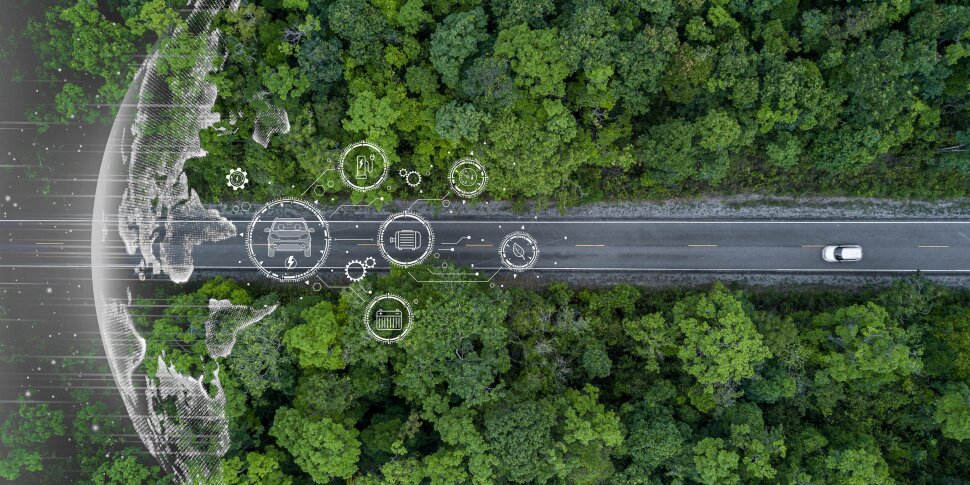Classification of Coconut Trees Within Plantations from UAV Images Using Deep Learning with Faster R-CNN and Mask R-CNN
Downloads
Doi:10.28991/HEF-2024-05-04-02
Full Text:PDF
Downloads
Vermote, E. F., Skakun, S., Becker-Reshef, I., & Saito, K. (2020). Remote sensing of coconut trees in Tonga using very high spatial resolution WorldView-3 data. Remote Sensing, 12(19), 3113. doi:10.3390/RS12193113.
Zainol, F. A., Arumugam, N., Daud, W. N. W., Suhaimi, N. A. M., Ishola, B. D., Ishak, A. Z., & Afthanorhan, A. (2023). Coconut Value Chain Analysis: A Systematic Review. Agriculture, 13(7), 1379. doi:10.3390/agriculture13071379.
Office of Agricultural Economics. (2021). Agricultural Statistics of Thailand 2021. Office of Agricultural Economics, Bangkok, Thailand.
Zheng, J., Yuan, S., Wu, W., Li, W., Yu, L., Fu, H., & Coomes, D. (2023). Surveying coconut trees using high-resolution satellite imagery in remote atolls of the Pacific Ocean. Remote Sensing of Environment, 287, 113485. doi:10.1016/j.rse.2023.113485.
Worachairungreung, M., Thanakunwutthirot, K., & Kulpanich, N. (2023). A Study on Oil Palm Classification for Ranong Province Using Data Fusion and Machine Learning Algorithms. Geographia Technica, 18(1), 161–176. doi:10.21163/GT_2023.181.12.
Terentev, A., Dolzhenko, V., Fedotov, A., & Eremenko, D. (2022). Current State of Hyperspectral Remote Sensing for Early Plant Disease Detection: A Review. Sensors, 22(3), 757. doi:10.3390/s22030757.
Noppon, L., & Nipon, P. (2019). Adapting a stereo camera system to determine coconut ages. Proceedings of the 16th International Conference on Electrical Engineering/Electronics, Computer, Telecommunications and Information Technology, ECTI-CON 2019, 802–805. doi:10.1109/ECTI-CON47248.2019.8955375.
Kannan, B., Ragunath, K. P., Kumaraperumal, R., Jagadeeswaran, R., & Krishnan, R. (2017). Mapping of coconut growing areas in Tamil Nadu, India using remote sensing and GIS. Journal of Applied and Natural Science, 9(2), 771–773. doi:10.31018/jans.v9i2.1272.
Kulpanich, N., Worachairungreung, M., Waiyasusri, K., Sae-Ngow, P., & Pinasu, D. (2022). Height Measurement and Oil Palm Yield Prediction Using Unmanned Aerial Vehicle (UAV) Data to Create Canopy Height Model (CHM). Geographia Technica, 17(2), 164–178. doi:10.21163/GT_2022.172.14.
Gibril, M. B. A., Shafri, H. Z. M., Shanableh, A., Al-Ruzouq, R., Wayayok, A., & Hashim, S. J. (2021). Deep convolutional neural network for large-scale date palm tree mapping from UAV-based images. Remote Sensing, 13(14), 2787. doi:10.3390/rs13142787.
Erdem, F., Ocer, N. E., Matci, D. K., Kaplan, G., & Avdan, U. (2023). Apricot tree detection from UAV-images using mask r-CNN and u-net. Photogrammetric Engineering and Remote Sensing, 89(2), 89–96. doi:10.14358/PERS.22-00086R2.
Islam, S., Reza, M. N., Chowdhury, M., Ahmed, S., Lee, K. H., Ali, M., Cho, Y. J., Noh, D. H., & Chung, S. O. K. (2024). Detection and segmentation of lettuce seedlings from seedling-growing tray imagery using an improved mask R-CNN method. Smart Agricultural Technology, 8, 100455. doi:10.1016/j.atech.2024.100455.
Manoharan, S. K., Megalingam, R. K., Kota, A. H., P., V. K. T., & Sankardas, K. S. (2023). Hybrid fuzzy support vector machine approach for Coconut tree classification using image measurement. Engineering Applications of Artificial Intelligence, 126, 106806. doi:10.1016/j.engappai.2023.106806.
Palananda, A., & Kimpan, W. (2022). Classification of Adulterated Particle Images in Coconut Oil Using Deep Learning Approaches. Applied Sciences (Switzerland), 12(2), 656. doi:10.3390/app12020656.
Gibril, M. B. A., Shafri, H. Z. M., Shanableh, A., Al-Ruzouq, R., Hashim, S. J. bin, Wayayok, A., & Sachit, M. S. (2024). Large-scale assessment of date palm plantations based on UAV remote sensing and multiscale vision transformer. Remote Sensing Applications: Society and Environment, 34, 101195. doi:10.1016/j.rsase.2024.101195.
Kavithamani, V., & UmaMaheswari, S. (2023). Investigation of deep learning for whitefly identification in coconut tree leaves. Intelligent Systems with Applications, 20, 200290. doi:10.1016/j.iswa.2023.200290.
Worachairungreung, M., Kulpanich, N., Thanakunwutthirot, K., & Hemwan, P. (2024). Monitoring Agricultural Land Loss by Analyzing Changes in Land Use and Land Cover. Emerging Science Journal, 8(2), 687–699. doi:10.28991/ESJ-2024-08-02-020.
Land Development Department. (2020). Land use plan for Samut Songkhram province. Land Development Department, Bangkok, Thailand.
Samut Songkhram Provincial Statistical Office. (2019). Samut Songkhram Provincial Statistical Report. Samut Songkhram Provincial Statistical Office, Samut Songkhram, Thailand.
D.J.I. (2018). Phantom 4_Pro and Pro Plus Series User Manual. DJI Phantom, China.
Kulpanich, N., Worachairungreung, M., Thanakunwutthirot, K., & Chaiboonrueang, P. (2023). The Application of Unmanned Aerial Vehicles (UAVs) and Extreme Gradient Boosting (XGBoost) to Crop Yield Estimation: A Case Study of Don Tum District, Nakhon Pathom, Thailand. International Journal of Geoinformatics, 19(2), 65–77. doi:10.52939/ijg.v19i2.2569.
Choi, J. Y., & Han, J. M. (2024). Deep Learning (Fast R-CNN)-Based Evaluation of Rail Surface Defects. Applied Sciences (Switzerland), 14(5), 1874. doi:10.3390/app14051874.
Wang, Z., Ling, Y., Wang, X., Meng, D., Nie, L., An, G., & Wang, X. (2022). An improved Faster R-CNN model for multi-object tomato maturity detection in complex scenarios. Ecological Informatics, 72, 101886. doi:10.1016/j.ecoinf.2022.101886.
Girshick, R., Donahue, J., Darrell, T., & Malik, J. (2014). Rich feature hierarchies for accurate object detection and semantic segmentation. Proceedings of the IEEE Computer Society Conference on Computer Vision and Pattern Recognition, 580–587. doi:10.1109/CVPR.2014.81.
Fu, H., Zhao, H., Jiang, J., Zhang, Y., Liu, G., Xiao, W., Du, S., Guo, W., & Liu, X. (2024). Automatic detection tree crown and height using Mask R-CNN based on unmanned aerial vehicles images for biomass mapping. Forest Ecology and Management, 555, 121712. doi:10.1016/j.foreco.2024.121712.
Maxwell, A. E., Pourmohammadi, P., & Poyner, J. D. (2020). Mapping the topographic features of mining-related valley fills using mask R-CNN deep learning and digital elevation data. Remote Sensing, 12(3), 547. doi:10.3390/rs12030547.
Sokolova, M., Japkowicz, N., & Szpakowicz, S. (2006). Beyond accuracy, F-score and ROC: A family of discriminant measures for performance evaluation. AAAI Workshop - Technical Report: WS-06-06, 24–29. doi:10.1007/11941439_114.
Henderson, P., & Ferrari, V. (2017). End-to-end training of object class detectors for mean average precision. Lecture Notes in Computer Science (including subseries Lecture Notes in Artificial Intelligence and Lecture Notes in Bioinformatics): Vol. 10115 LNCS, 198–213. doi:10.1007/978-3-319-54193-8_13.
Bouguettaya, A., Zarzour, H., Kechida, A., & Taberkit, A. M. (2022). Deep learning techniques to classify agricultural crops through UAV imagery: a review. Neural Computing and Applications, 34(12), 9511–9536. doi:10.1007/s00521-022-07104-9.
Istiak, M. A., Syeed, M. M. M., Hossain, M. S., Uddin, M. F., Hasan, M., Khan, R. H., & Azad, N. S. (2023). Adoption of Unmanned Aerial Vehicle (UAV) imagery in agricultural management: A systematic literature review. Ecological Informatics, 78, 102305. doi:10.1016/j.ecoinf.2023.102305.
Putra, Y. C., & Wijayanto, A. W. (2023). Automatic detection and counting of oil palm trees using remote sensing and object-based deep learning. Remote Sensing Applications: Society and Environment, 29, 100914. doi:10.1016/j.rsase.2022.100914.
El Hoummaidi, L., Larabi, A., & Alam, K. (2021). Using unmanned aerial systems and deep learning for agriculture mapping in Dubai. Heliyon, 7(10), 8154. doi:10.1016/j.heliyon.2021.e08154.
Neupane, K., & Baysal-Gurel, F. (2021). Automatic identification and monitoring of plant diseases using unmanned aerial vehicles: A review. Remote Sensing, 13(19), 3841. doi:10.3390/rs13193841.
Hoi, N. D., & Dung, N. T. (2021). Seasonal dynamics of tropical forest vegetation in Ngoc Linh nature reserve, Vietnam based on UAV data. Forest and Society, 5(2), 376–389. doi:10.24259/fs.v5i2.13027.
- The authors retain all copyrights. It is noticeable that authors will not be forced to sign any copyright transfer agreements.
- This work (including HTML and PDF Files) is licensed under a Creative Commons Attribution 4.0 International License.














